Collected from many countries
We visited Ms. Hong Len's house in Lac Ap Bung Goi, Cua Duong Commune, Phu Quoc City ( Kien Giang ). Entering the gate, after admiring the ornamental plants and flowers of all kinds on both sides of the path, Ms. Len led us to visit the collection of marigolds.
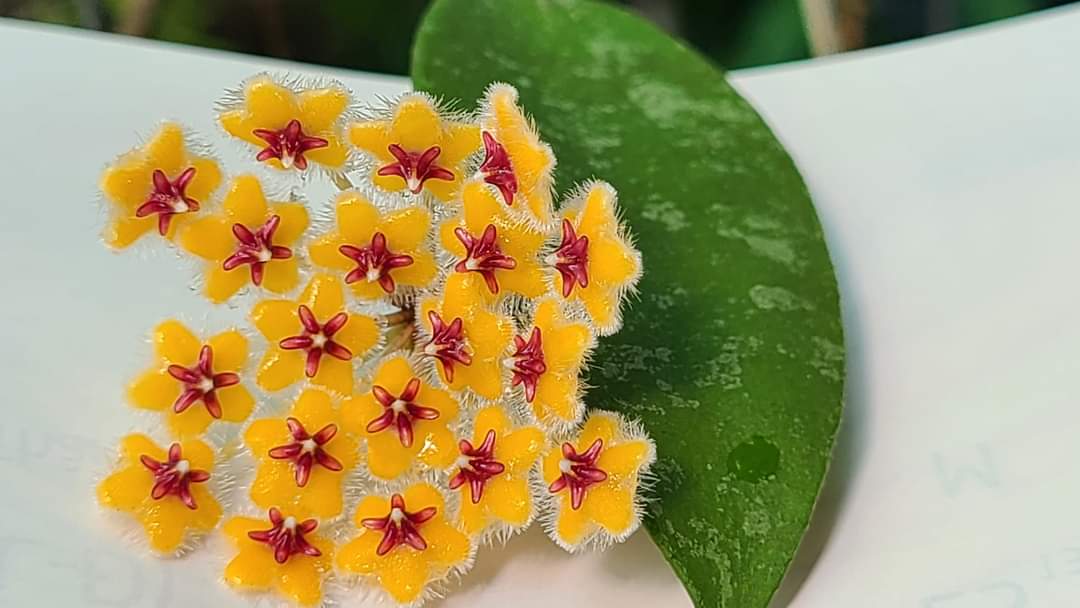
Hoya honglenae was discovered by Ms. Hong Len in Phu Quoc.
Ms. Hong Len's hibiscus garden is arranged in two layers. The upper layer has large flower pots, some are blooming, some have flower stalks peeking out from the leaf axils. The lower layer is made up of tiny flower pots, which Ms. Len said are being propagated. There is also a separate area for caring for hibiscus plants grown from seeds, because the care of this species is much more special than that of those propagated by cuttings.
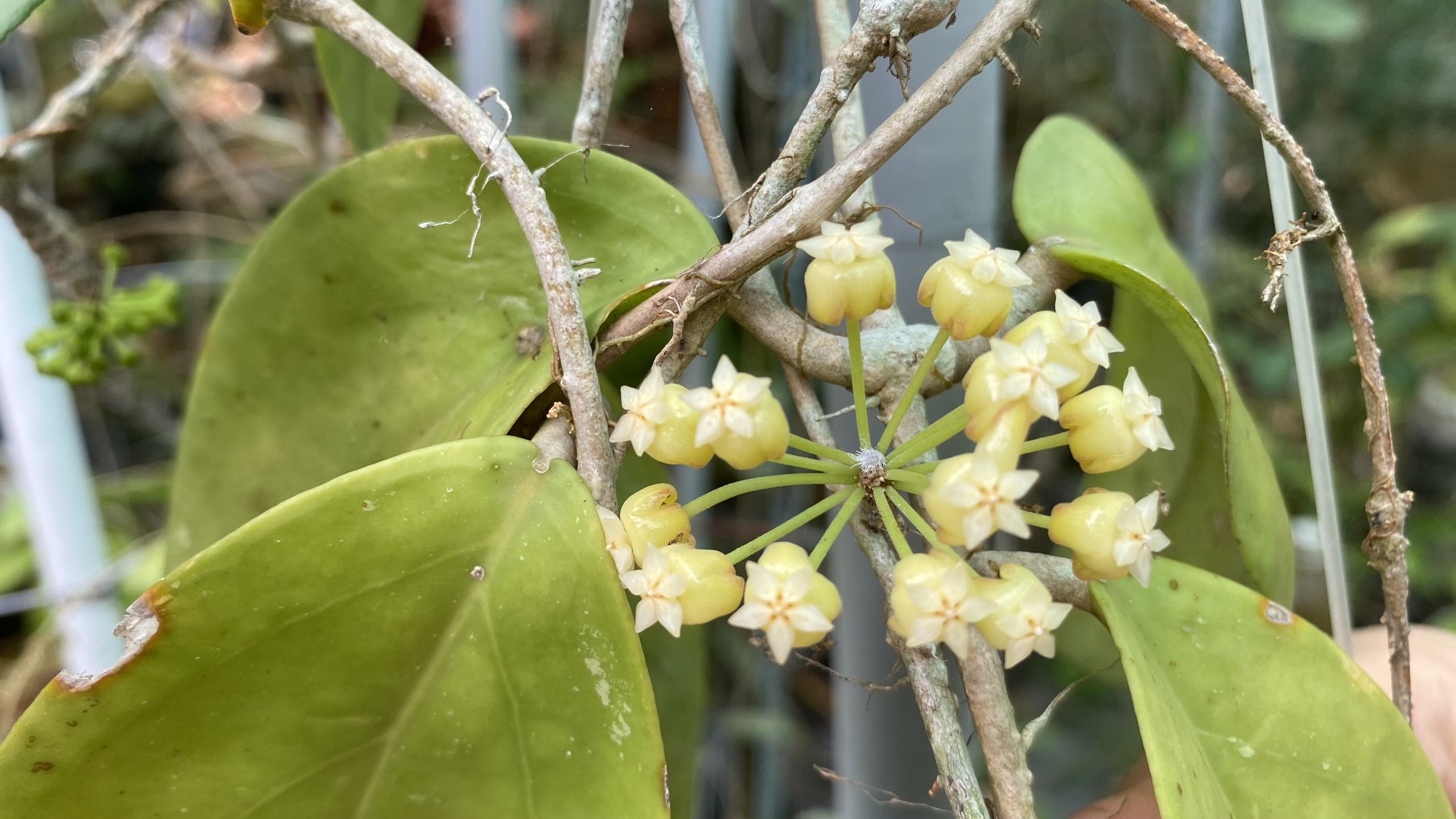
Hoya crassicaulis produces white-yellow flowers, often star-shaped.
The garden is only about 200 square meters wide but it takes more than 2 hours to visit it all. Because, while walking and admiring, Ms. Len always mentions the origin, flower color and even the scent of each type... There are clusters of flowers that spread out like fireworks shooting into the air, round clusters like small balls, diverse in size, color and scent: lemon scent, milk flower scent, vanilla scent, peppermint essential oil scent, yogurt scent...
While introducing, Ms. Len suddenly stopped next to a small carnation flower, which fit neatly in the palm of her hand. She told us to smell it, it really had 3 scents mixed together: lemon, ginger and peach. It was a carnation crassicaulis, originating from the Philippines.
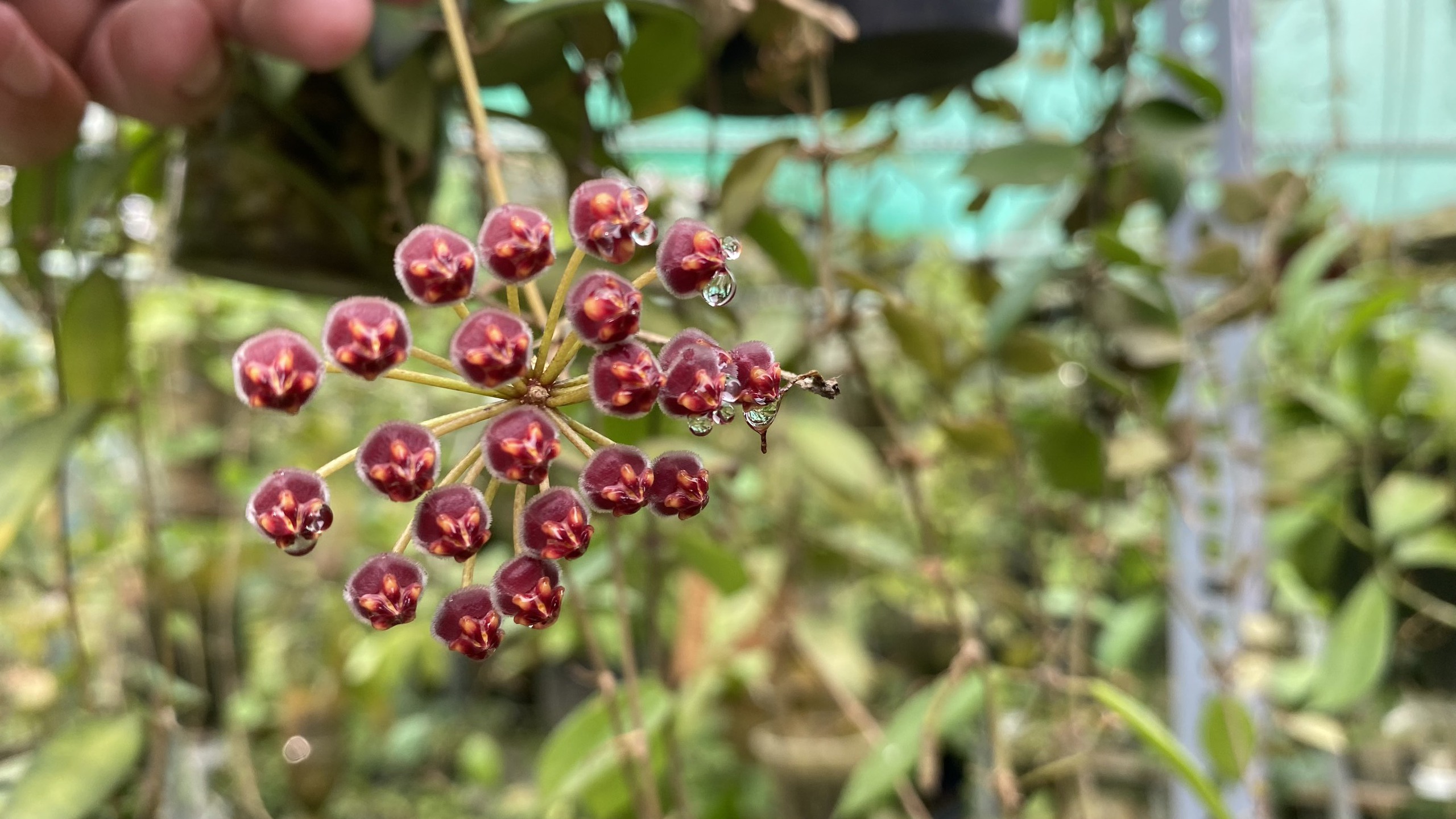
Hoya rosita has climbing or drooping stems, beautiful leaves that change color when exposed to sunlight, and is a valuable plant.
Ms. Len said that her garden of hydrangeas has nearly 500 species, most of which are purchased from Thailand, the Philippines, and Indonesia. Examples include Hoya Mindorensis Red, Hoya Patella, Hoya Peninsularis, Hoya Megalaster, etc. In addition, there are many Vietnamese hydrangeas such as: hoya lockii (named after Professor Loc), hoya verticilata, hoya hanhiae, hoya globulosa, hoya kerrii (heart-leaf hydrangeas), hoya chinghungensis, etc.
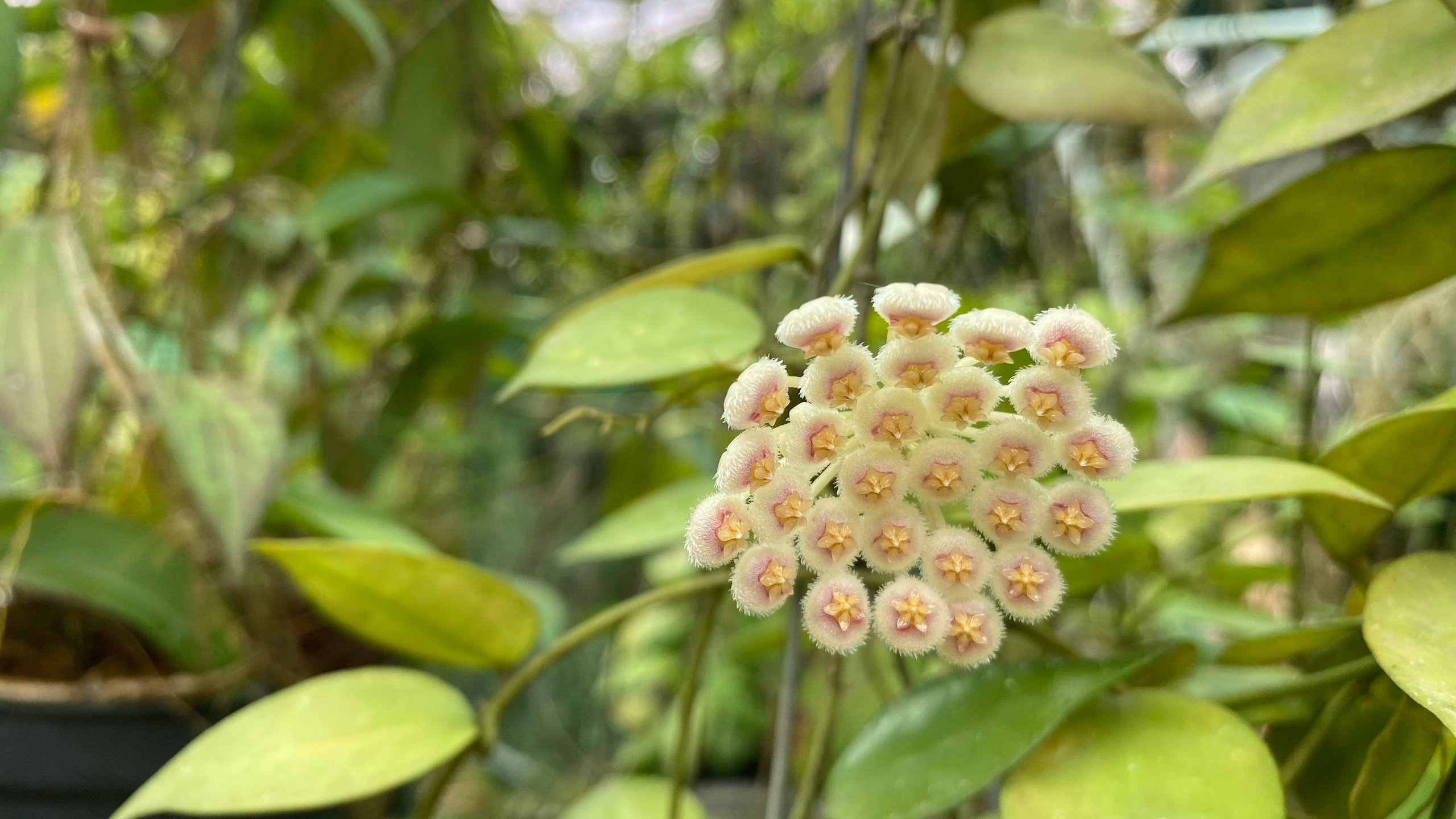
Hoya nabawanensis blooms like a bunch of fireworks flying across the sky
The garden is divided into two parts: one part is covered with a net to block the sun, the other part is covered with a roof to keep out the rain. Seeing our curiosity, Ms. Len said: "Taking care of marigolds is like taking care of children. There are some types that do not like the rain of the sea, we have to water them ourselves and not let the sky water them."
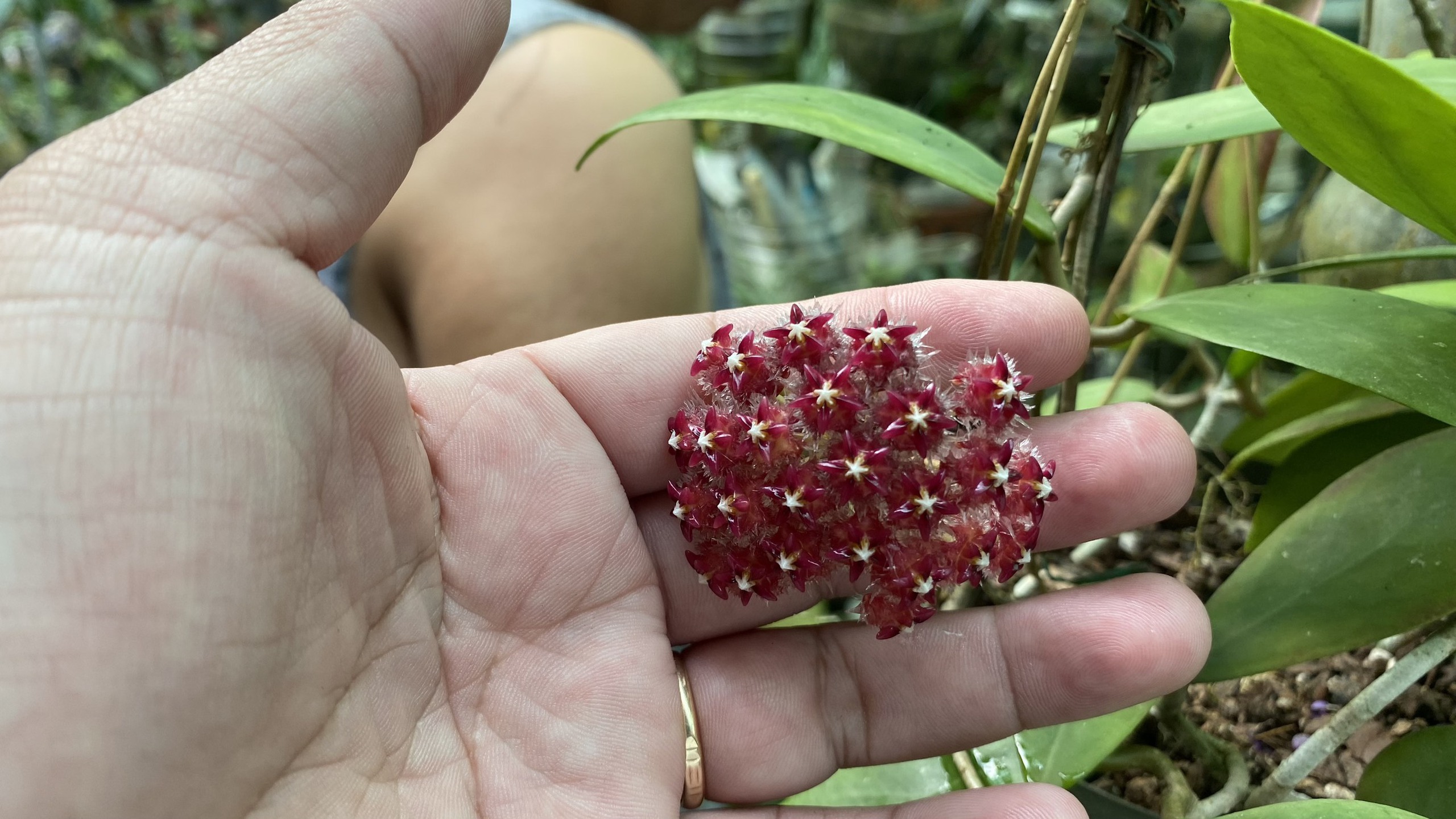
Hoya mindorensis red is small and fits in the palm of your hand.
Hoya Honglenea discovered in Phu Quoc
Ms. Len said that around 2019, a friend picked up some marigold branches on the side of the road that had been bulldozed to make way for the road and brought them home as gifts for her. Finding it strange, she guessed it was a new type of marigold, so she happily planted it and took good care of it. More than a month later, the plant sprouted buds and flowers on the old flower spike.
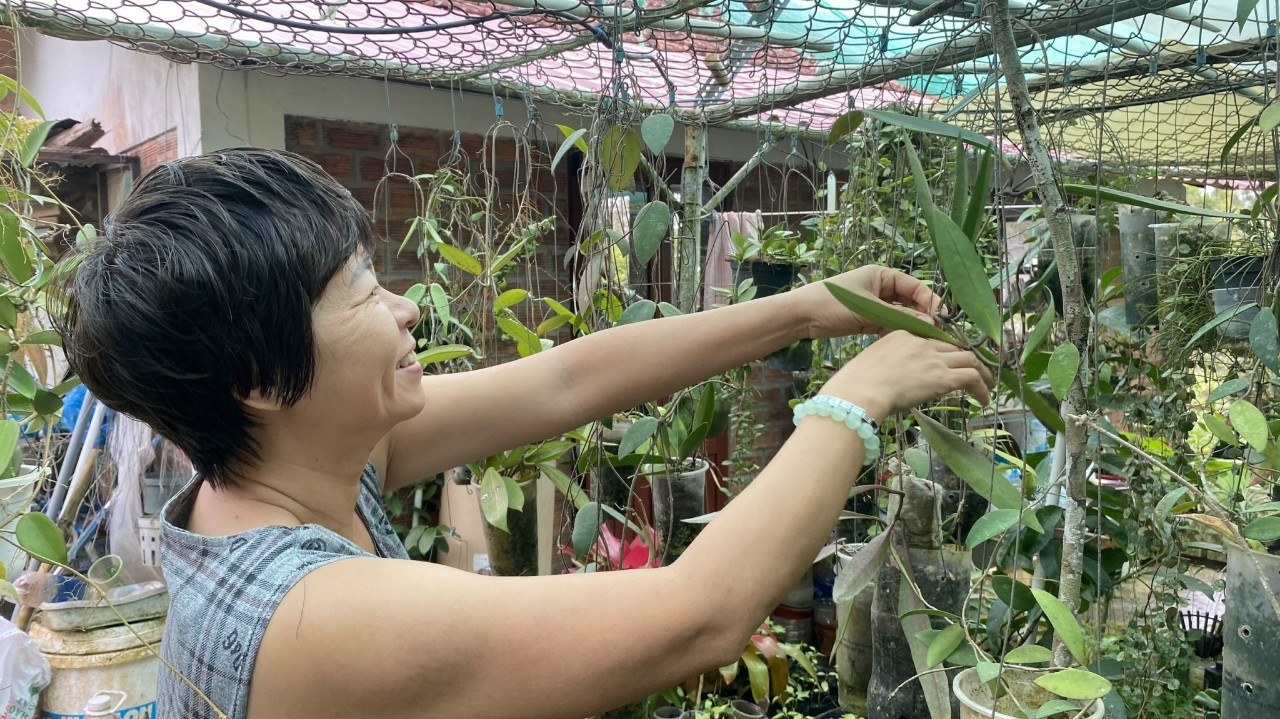
Ms. Hong Len is taking care of her precious collection.
"The feeling when seeing a new hydrangea is so happy, it makes up for my crazy passion of looking for hydrangeas wherever there are forests and trees," Len shared.
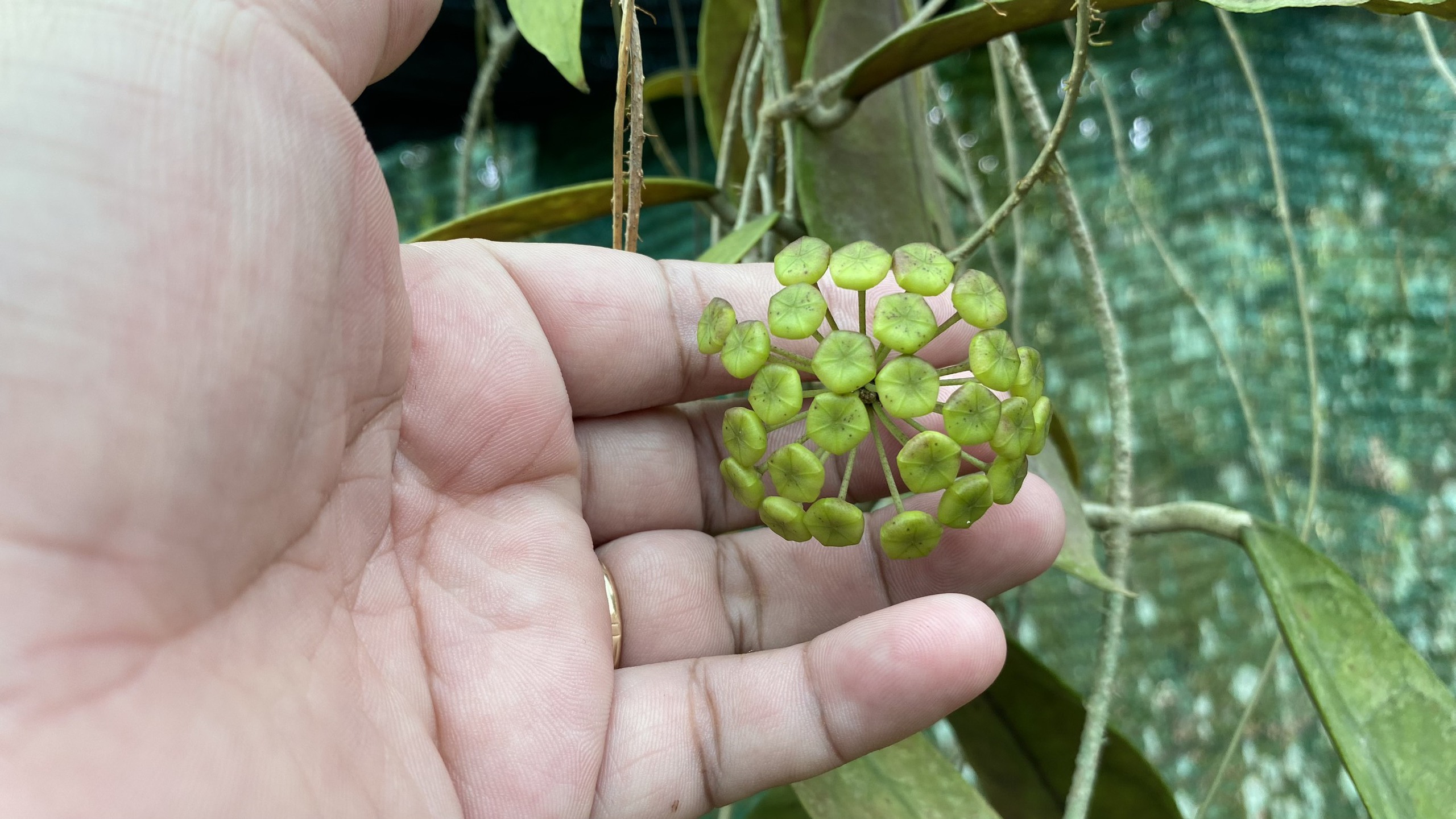
Hoya peninsulasis green flowers, when blooming, the petals look like succulents
When the plant had flowers, Ms. Len sent the photo to her friends who are hoya enthusiasts for reference and knew for sure that it was a new type of hoya. She sent the plant to the Vietnamese botanical research group to make a profile to name this type of hoya. After waiting for 4 years, there was good news: the hoya was recognized as a new species and named after her to honor the person who discovered and cared for it: hoya honglenae.
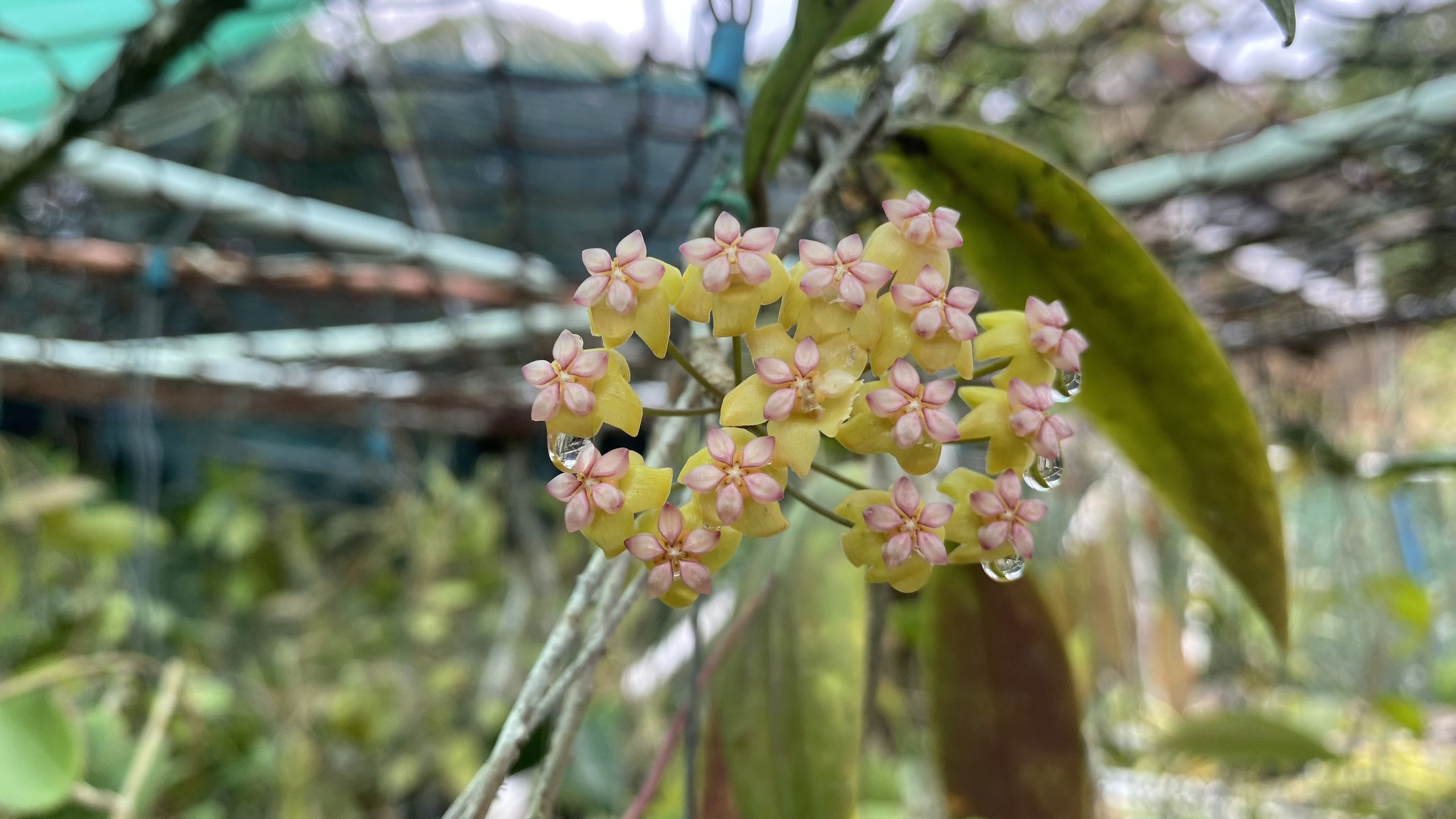
Hoya soligiamiana blooming, dew drops still lingering on the petals
Showing us two pots of hoya honglenae, Ms. Len said she loved it very much. She was very happy to see a plant from Vietnam in general and Phu Quoc in particular on the world flora map.
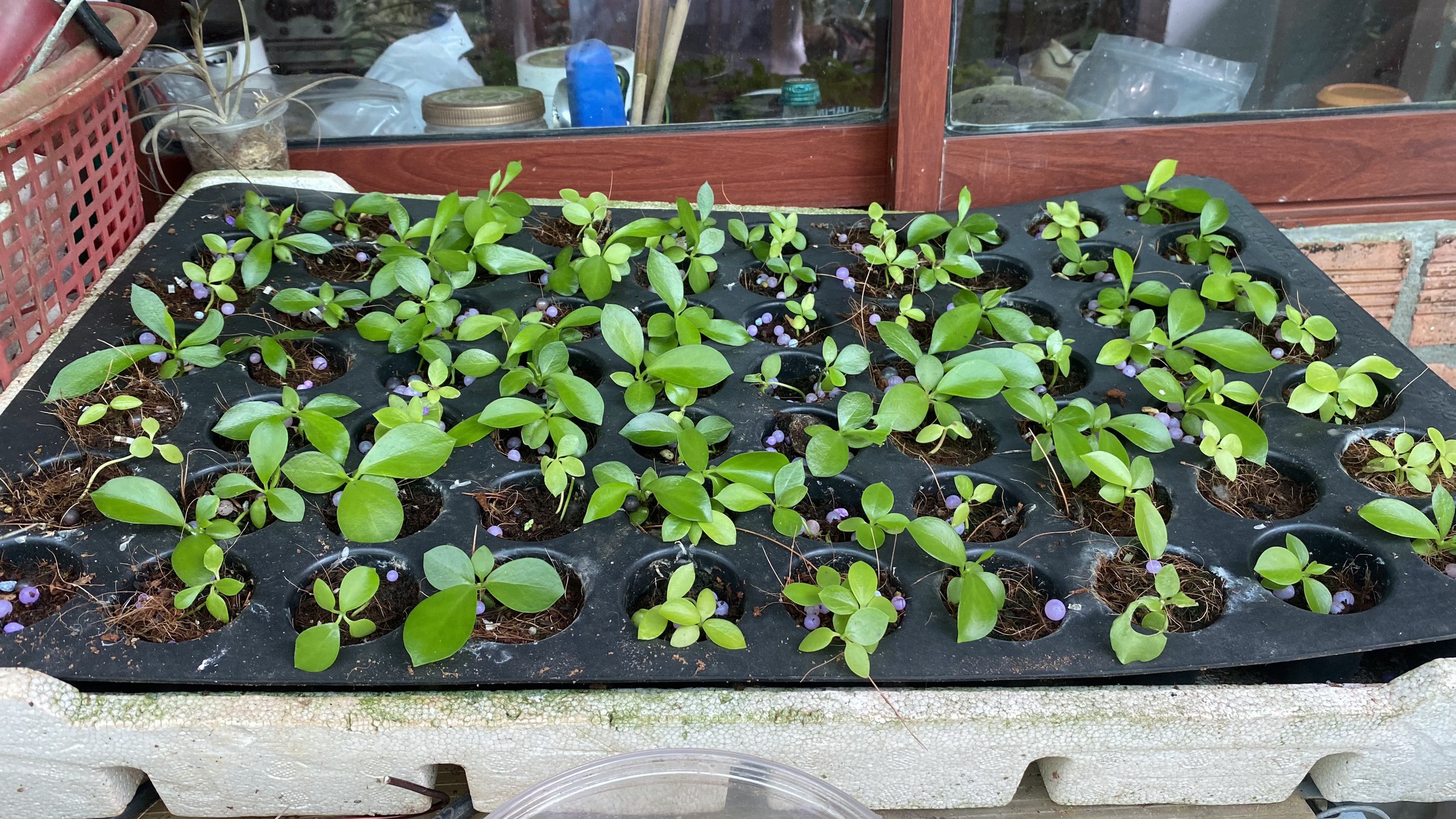
Tray of red dragon hoya seedlings that Ms. Len has painstakingly propagated
The cyclamen is a genus of plants in the subfamily Cyclamen, native to some regions of Asia, especially Southeast Asia and Australia. The plant has thick, glossy leaves, climbing stems and also some soft, hard stems, symmetrical leaves, and milky white sap (some types of sap are transparent).
In Vietnam, there are up to 40 species of hoya, stretching from the South to the North, from the highland dipterocarp forests of Dak Lak , the Central coast to the mountainous regions of the Northwest bordering China: hoya nummularoides, hoya verticillata, hoya kerrii, hoya diversifloria, hoya chinghungensis, hoya acumanita, hoya pandurata... There are several endemic species of hoya that are only distributed in Vietnam such as: hoya lockii, hoya hanhiae, hoya lamthanhiae, hoya honglenae...
Source link


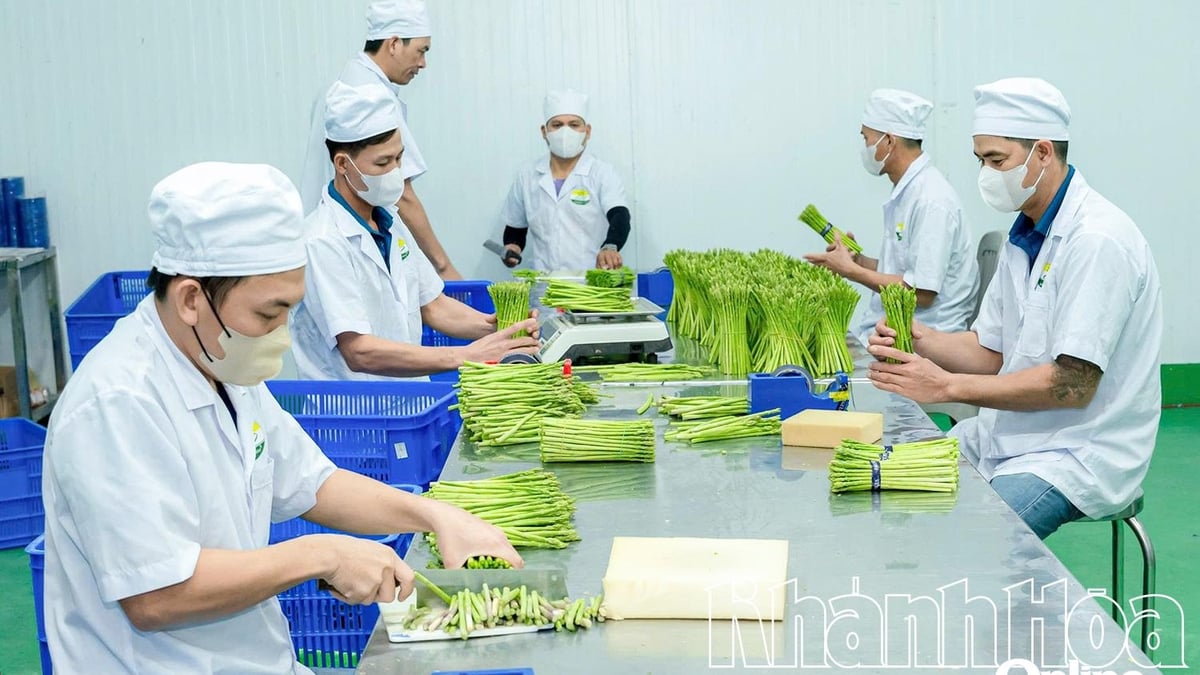
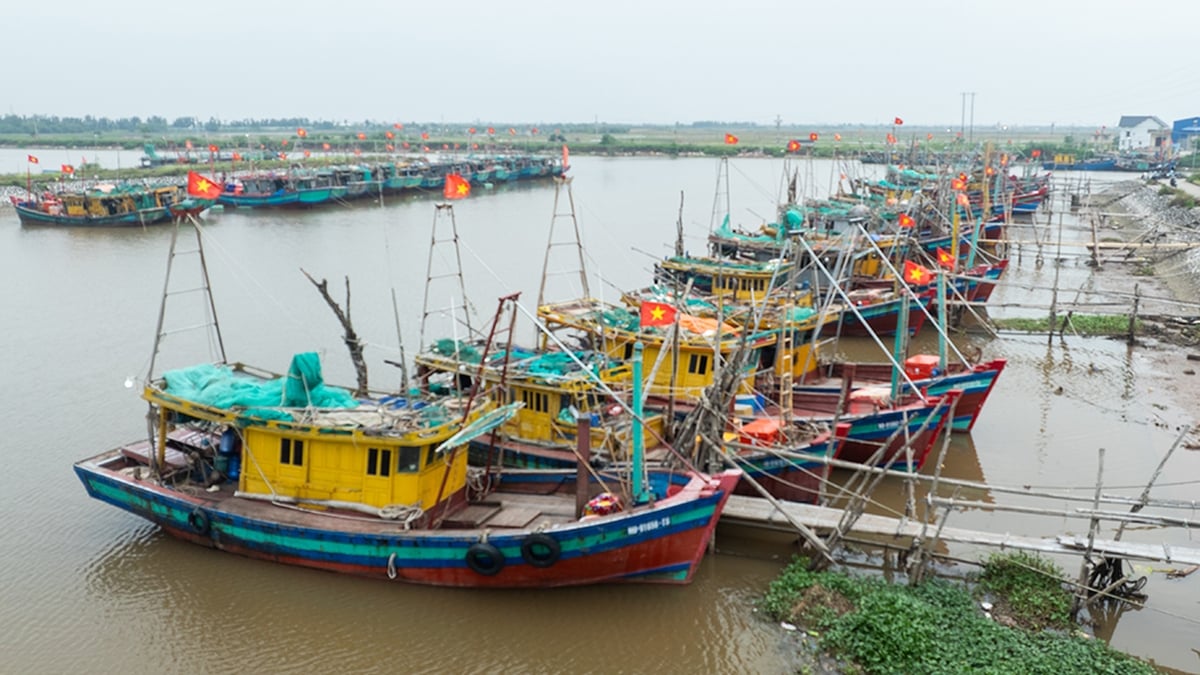






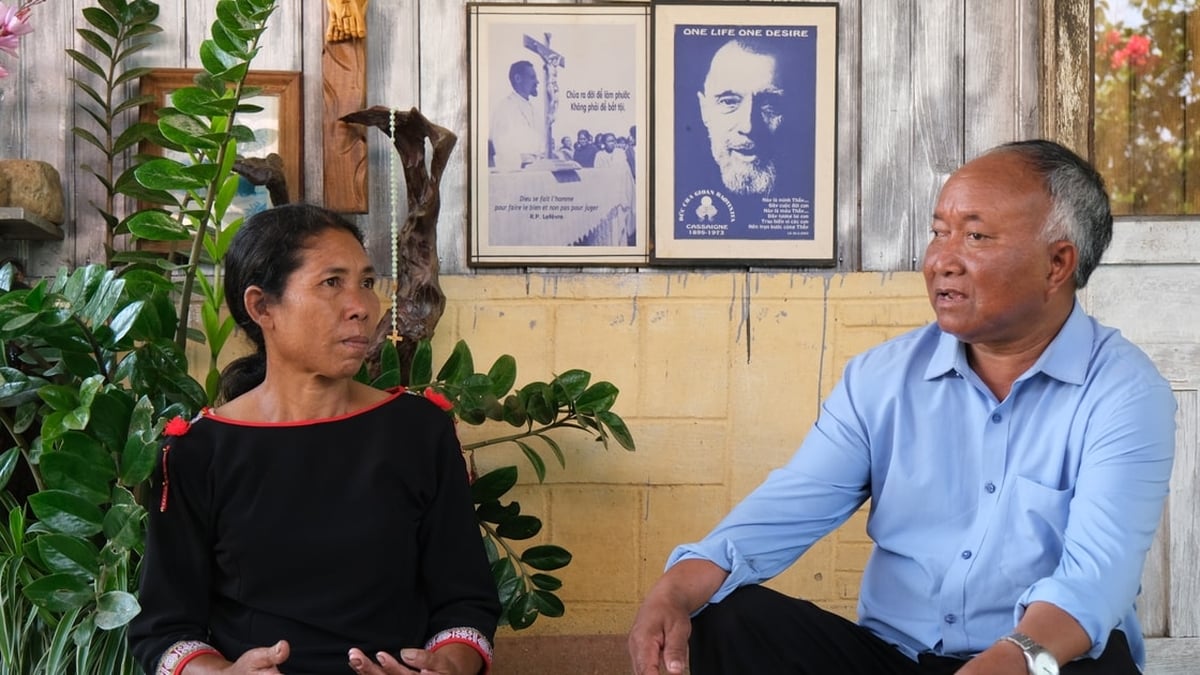
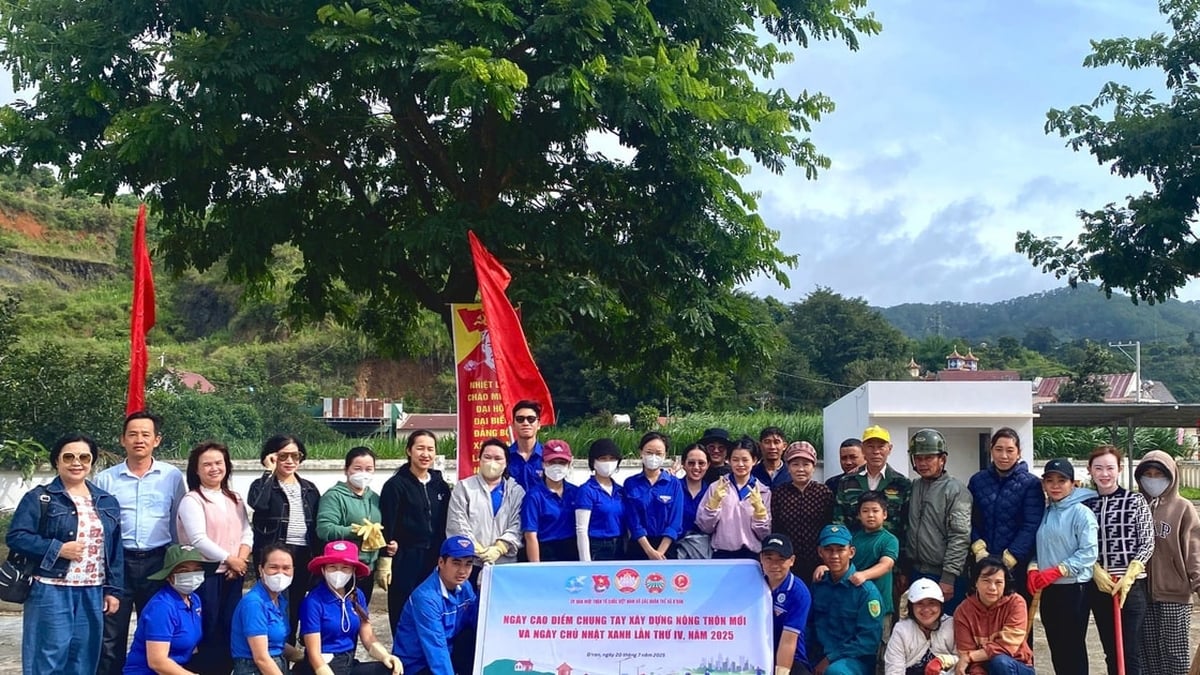

















![[Photo] National Assembly Chairman Tran Thanh Man visits Vietnamese Heroic Mother Ta Thi Tran](https://vphoto.vietnam.vn/thumb/1200x675/vietnam/resource/IMAGE/2025/7/20/765c0bd057dd44ad83ab89fe0255b783)



































































Comment (0)